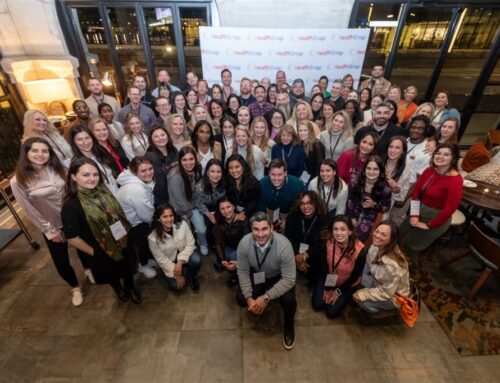By Wesley Smith Ph.D., HeathSnap Co-Founder & Chief Scientific Officer
As HealthSnap’s Co-founder and Chief Scientific Officer, I have been keeping a close eye on the 2024 changes proposed by the Centers for Medicare and Medicaid Services (CMS) for Remote Patient Monitoring. These changes could seriously shape the future of Remote Patient Monitoring (RPM) and Remote Therapeutic Monitoring (RTM) services, and they also give us a peek into CMS’s thoughts on how effective these programs are for patients and the healthcare industry.
For those of us who see these programs as the heart of a new healthcare landscape, using tech to boost access and effectiveness, we’re feeling pretty hopeful about CMS’s ongoing support and expansion of these services.
Here, I’d like to dig into these proposed changes, which focus on three key areas: the 16-day requirement, bringing Federally Qualified Health Centers (FQHCs) and Rural Health Clinics (RHCs) into Remote Patient Monitoring (RPM) and Remote Therapeutic Monitoring (RTM) billing, and classifying RPM as a primary care service.
Holding Firm: The 16-Day Requirement
If you’re not familiar with the specifics of RPM, CMS identifies an active patient as one who transmits data, like blood pressure measurements, for over half the days while on the program. Specifically, the requirement is 16 days of data transmission within a 30-day period. It’s essential to understand that this isn’t about individual measurements; for instance, even if a patient takes 8 measurements in one day and another 8 on a different day, it’s counted as just two days of data transmission.

This requirement also applies to clinical staff service codes associated with Remote Patient Monitoring (RPM), which can be billed for direct patient interactions, such as video or phone calls. These interactions are quantified in 20-minute increments for billing subsequent codes (99457 and 99458), but only for patients who meet the 16-day data transmission criterion within a 30-day period. Even though there are ongoing debates among industry professionals and researchers about whether this requirement is based on empirical evidence or is somewhat arbitrary, it appears that the 16-day requirement is not going away in 2024.
Within our internal analysis at HealthSnap, utilizing machine learning algorithms on data from hypertensive patients, we discovered that the transmission index – the rate at which a patient sends data – is one of the most substantial influencers of blood pressure improvements. As we continue to refine our data comprehension and enhance our analytical capabilities, it’s worth considering if achieving significant clinical improvements and making well-informed clinical decisions may require more or less than 16 days of data transmission per month.
For now, with respect to our internal data, it appears sensible to maintain the 16-day data transmission requirement in 2024, at least until we have stronger evidence suggesting a change. On the flip side, it’s important for all of us involved to consider the potential fallout from lessening this requirement, especially with regard to how it may impact user engagement. At HealthSnap, we’re all in on helping patients see data transmission (like stepping on the scale) as being as routine as brushing their teeth or taking their daily meds. In the event we were to reduce the number of required days, it could potentially throw a wrench in the regular tracking of the targeted parameter. This could result in causing more folks to drop out of the program and lower overall engagement.
Federally Qualified Health Centers (FQHCs) and Rural Health Clinics (RHCs) Included
A big part of what we aim for with full-service remote monitoring is to provide a kind of “personal concierge” level of care within the RPM program. We want to focus on the patient and help them to feel more capable and informed when it comes to their health. Currently, there exists a real challenge in reaching communities that are underserved or have limited access to care.
The 2024 proposal to include FQHCs and RHCs in RPM and RTM billing is an encouraging step. It suggests we will be able to bring our successful programs to these folks, potentially making a real difference in health outcomes where it’s most needed. Because let’s face it, where you live – your zip code – can often be a sneaky risk factor when it comes to health disparities. This change could help us tackle that issue head-on.

Kristen Khoury, MBA who is a Customer Success Manager at HealthSnap says, “Remote Patient Monitoring provides a transformative solution for FQHCs, frequently serving underprivileged and rural communities. By bringing healthcare directly to the homes of patients with chronic conditions, RPM ensures a higher level of care and oversight. Not only does RPM eliminate the need for regular visits to the doctor’s office, which can be challenging for patients in remote areas, but it also brings peace of mind to older patients by continuously monitoring their health and proactively adjusting treatment plans. The best part? RPM is accessible to patients with any type of medical coverage or even those without insurance. Additionally, the data collected through RPM provides valuable insights for regulators to better understand the unique health needs of this population, ultimately driving policy changes that financially support FQHCs to expand and sustain their RPM programs.”
Accountable Care Organizations (ACOs) and the Future
In the fast-paced world of healthcare, Accountable Care Organizations (ACOs) are really making headway in delivering primary care services. They operate under a unique model where Medicare compensates them with a flat rate, and this gives ACOs a solid opportunity to thrive by identifying cost-saving measures.
Instead of ditching effective but expensive treatments, successful ACOs can get ahead by taking proactive steps – preventing expensive incidents like ER visits, hospital stays, and long-term disabilities.

Here’s what’s puzzling though, even with the potential for cost savings, many ACOs haven’t fully hopped on board with remote care services yet. These services can nip issues in the bud, preserve quality of life for patients, save lives, and significantly reduce utilization and costs.
There is a silver lining, however: starting in 2024, RPM will be classified as “primary care services,” this could be just what ACOs need to embrace Remote Patient Monitoring fully. If a patient in an ACO chooses to receive RPM services from a provider outside of the ACO, the organization may be penalized for “leakage” and have to pay fines to CMS.
This change could give ACOs the push they need to fully embrace remote monitoring — those of us who have seen the real benefits of remote monitoring programs know this is a definite win. By adopting this innovative approach, ACOs can tap into a range of health benefits and cost savings that come with remote monitoring, potentially shaking things up in value-based care.

Final Thoughts
Overall, we believe the proposed clarifications by CMS for remote monitoring services in 2024 will take an exciting and necessary step in the right direction for the future of Remote Patient Monitoring (RPM) and Remote Therapeutic Monitoring (RTM) services. At this point, the 16-day requirement for data transmission is justified for informed clinical decision-making. Even though there is debate about its empirical basis, we believe it is rational to uphold this requirement until further evidence suggests otherwise.
Based on HealthSnap’s internal data, the transmission index significantly predicts blood pressure improvements, underscoring the importance of regular data transmission. Reducing the required days, in my view, may disrupt user engagement and routine measurement of key health parameters.
We also consider the inclusion of FQHCs and RHCs in RPM and RTM billing as a significant win. It extends these transformative programs to underserved populations, potentially addressing health disparities that have long been a concern.
While ACOs can benefit from adopting remote care services, it is evident that most are not fully using these services. The proposed changes for 2024, which classify RPM as “primary care services,” could encourage ACOs to fully commit to remote monitoring to avoid potential “leakage” penalties. This could unlock invaluable health benefits and cost savings, making it a win-win situation for all parties involved.
In our view, these changes hint at an exciting future for healthcare, where technology and proactive care converge to improve access and outcomes, especially for underserved communities.










